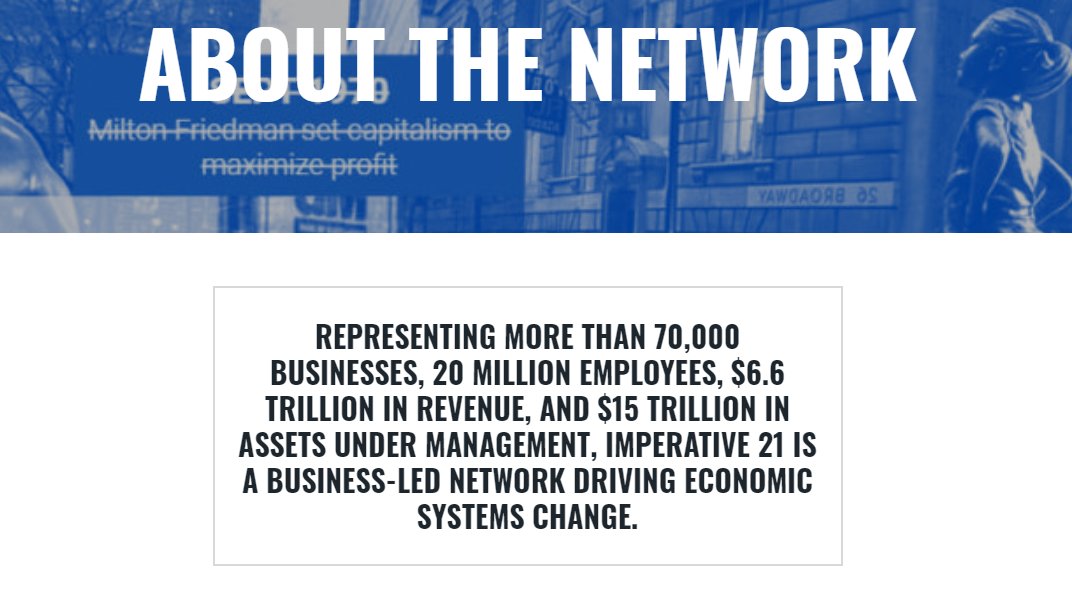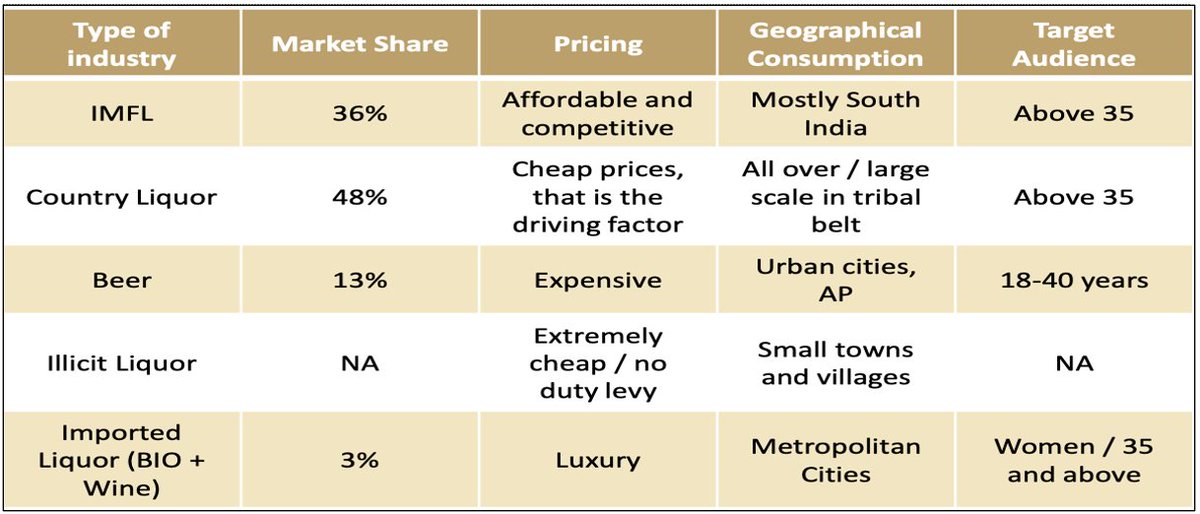Alex1Powell Categories Economy
Obviously a longtime Disney D2C bull; I was astounded, shocked by slate's quality, range, volume.
This is Disney going beyond a digital "Vault" plus originals. It is saying all of your favorite stories, more,
This feels like the true unveiling of Disney+ versus April 2019, tbh
— Matthew Ball (@ballmatthew) December 10, 2020
2/ Not just a stronger Disney+, but one that hugely raises the tablestakes of competition, growth, press coverage, notability.
Paramount+ plans new Star Trek year round. Feels quaint now. Peacock will have a Jurassic Park + Fast series eventually.
In other words, the year-long Disney+ Open Beta attracted 87M subscribers.
— Chris Lacy (@chrismlacy) December 10, 2020
3/ In "Content, Cars, and Comparisons in the 'Streaming Wars'", I wrote about how Disney $1B in content spend gets several billion of equivalent spend through its resonance
Mando was a top 5 show per @ParrotAnalytics in 2019. Disney thinks it can have 10 "Top 5s" a year.
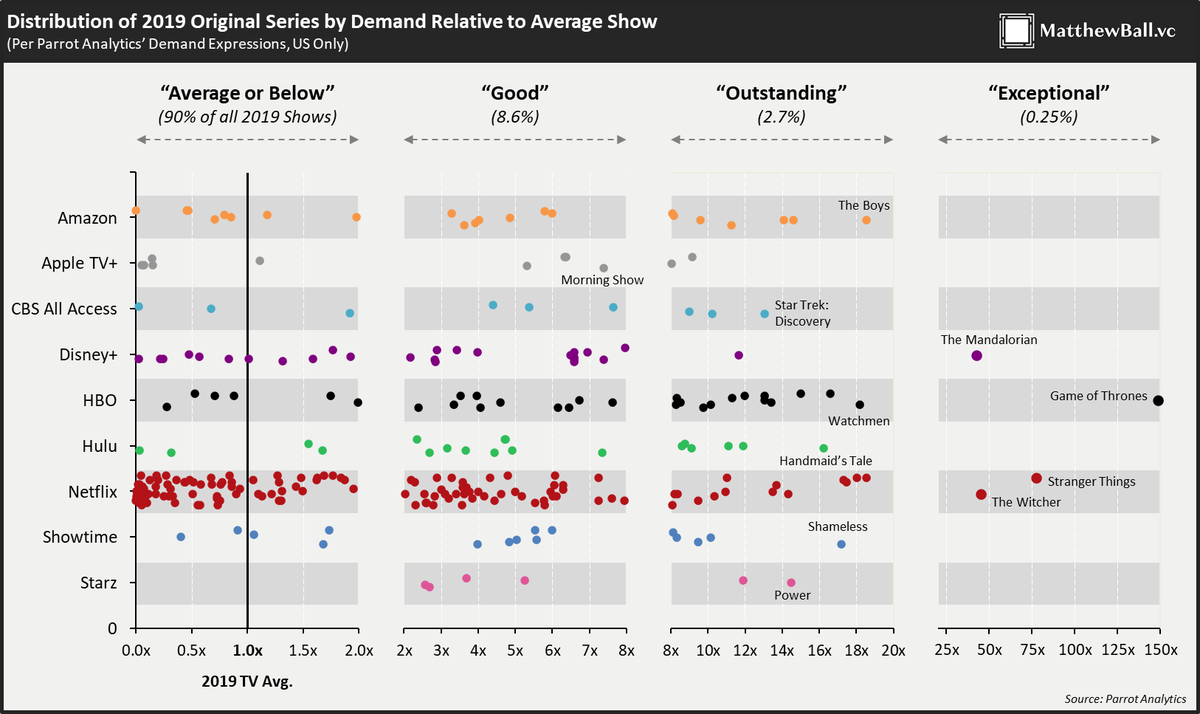
4/ Trade talk can be misleading, but it takes only a cursory look at Twitter, the most popular shows of the past decade (Walking Dead, Thrones, Mando, Stranger Things), Disney's dominance at the box office (8 of top 10 in 2019) and wonder how to beat
A former exec at a global media giant: "This is how the game is now played. If other companies want to compete, this is now the threshold... it's a kind of cultural shock and awe" (With permission)
— Matthew Ball (@ballmatthew) December 11, 2020
5/ Roadmap doesn't just suck oxygen out of streaming wars (as Netflix did from 2014-18), it will enable Disney+ to rapidly grow its price
If I pay $54 a year to use Disney+ for 2 months, what happens when it's year-round?
Worth $15 month in
I pay $27 per month for Disney+. This is the biggest bull thesis for Disney.
— Matthew Ball (@ballmatthew) November 14, 2020
1/14
China is building the world's most advanced UHV grid right now.
UHV lines are good for carrying power over long distances. The high voltage level reduces line loss. But they are very expensive to build.
China's UHVDC Network now:
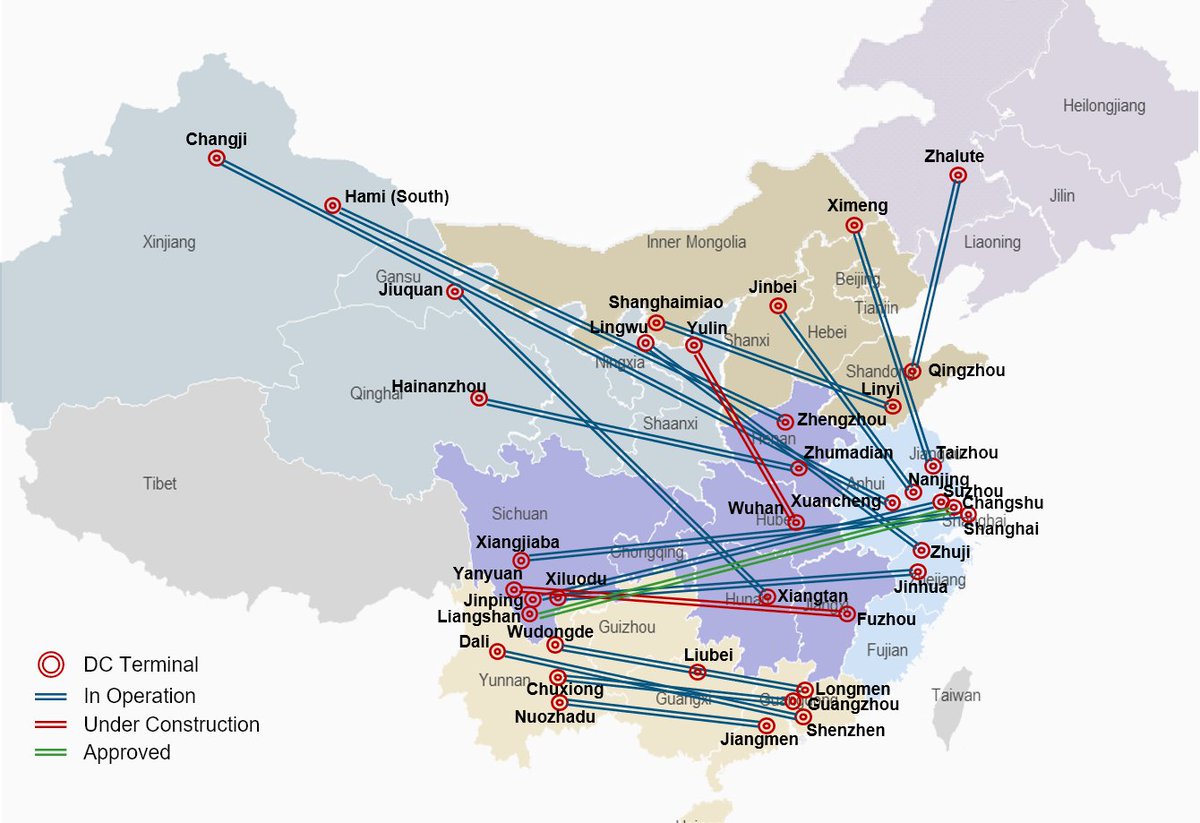
2/14
In the rest of the world, UHV lines have generally been used sparingly. Submarine power cables (e.g. connecting UK to mainland Europe) and some huge hydropower projects in Quebec are some notable exceptions.
China is building UHV lines on a scale never seen before.
3/14
So why is China different? Geography plays a huge role. China's load centers are in the coastal East and South, while the best wind, solar, and hydro resources are in the North, Northwest, and Southwest. Power (esp. RE) is being generated far from where it's needed most.
4/14
In the past, poor regional interconnectivity has been a big contributor to low offtake levels of renewable energy. Of course a glut of coal power also played a role. Curtailment has improved in recent yrs tho. I discussed regional grids before:
China Power Sector For Dummies- Part 1: Grids and Dispatch - Getting Smarter
— David F. (@pretentiouswhat) August 18, 2020
1/10
First, Chinese doesn't have a national grid, at least not in the way that small countries do. There are 6 regional grids (N, NE, NW, E, C, S). State Grid runs 5 of them and Southern Grid runs 1.
5/14
UHV lines provide a inter-region backbone to transport power hundreds or thousands of km across the country. The UHVDC lines are used for the longest distances, while UHVAC lines are used for shorter distances, often within the same regional grid.
China's UHVAC lines now:
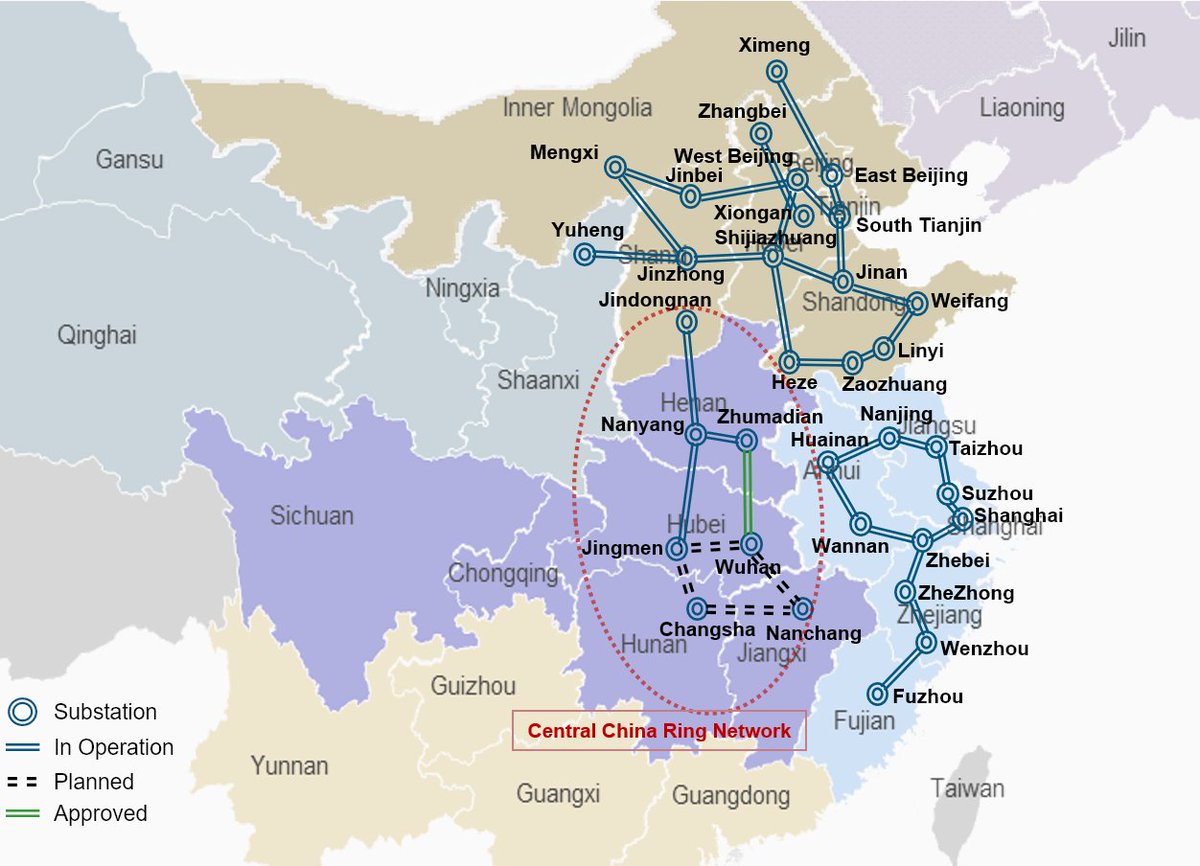
Falls of Rome & Tang in 1st millennium were worse, but at least they were recorded. Records of the even worse Bronze Age Collapse around 1200 BC barely survived for some areas, & for other regions all we have are archaeological indications that they regressed to the stone age.
Bronze Age Collapse & resultant trade breakdown led to cession of bronze production in the Don River Basin. Locals reverted to stone & bone tools, then figured out how to make iron tools. Their neighbors adopted iron over the next few centuries. pic.twitter.com/HoDk52cLuH
— Nemets (@Peter_Nimitz) August 29, 2020
Further back in the 3rd millennium BC, an even worse series of catastrophes occurred - the Indo-European invasions - ending the Megalith Builder Civilization with their urban settlements & leaving much of Europe depopulated for 600 years.
There are no traces of permanent Corded Ware settlements anywhere - strongly supporting that they were nomadic cattle herders. Only after Bell Beaker arrival in 2300 BC do sedentary agricultural settlements return. pic.twitter.com/GkPluSgbbt
— Nemets (@Peter_Nimitz) May 3, 2020
By the time of their destruction the Megalith Builders themselves had been in a centuries long decline from their Golden Age in late 5th & early 4th millennium. Their great realms had likely disintegrated around 3500 BC into smaller chiefdoms engaging in endemic warfare.
Shennan: massive EEF population growth in Ireland 4000-3600 BC, followed by population decline & reforestation 3600-3400 BC. pic.twitter.com/HksEl16OjH
— Nemets (@Peter_Nimitz) June 18, 2020
The Megalith Builders themselves were the result of WHG chieftains overthrowing the decadent EEF chiefs like those of the Linear Ceramics around 4400 BC & subjugating an 1800 year old neolithic civilization. Possibly related to spread of copper-working.
Resurgence of Hunter-Gatherer ancestry in Copper Age Balkan EEF populations of mid 4000s & return of hunter-gatherers cultural customs. EEF Cucuteni\u2013Trypillians experienced this too - were 80% EEF, 10% EHG, 10% WHG in ancestry, showing they mixed with local HGs. pic.twitter.com/Tqf5yoc99U
— Nemets (@Peter_Nimitz) July 26, 2020
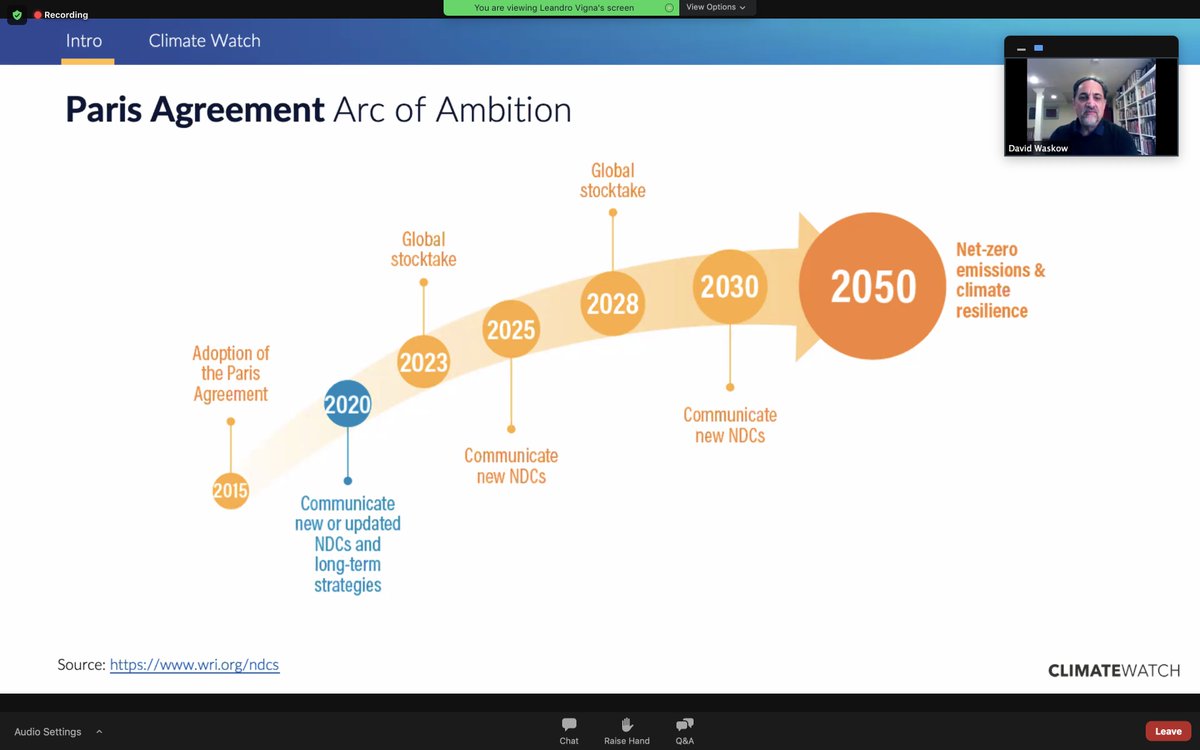
The world is currently WAY over our #carbonbudget for where we need to be to align with #ParisAgreement. Orange= countries will do under any event; red = conditional (e.g., will do if they get needed finance). We have LOTSA emissions to reduce fast @davidwaskow @WRIClimate (2/n)
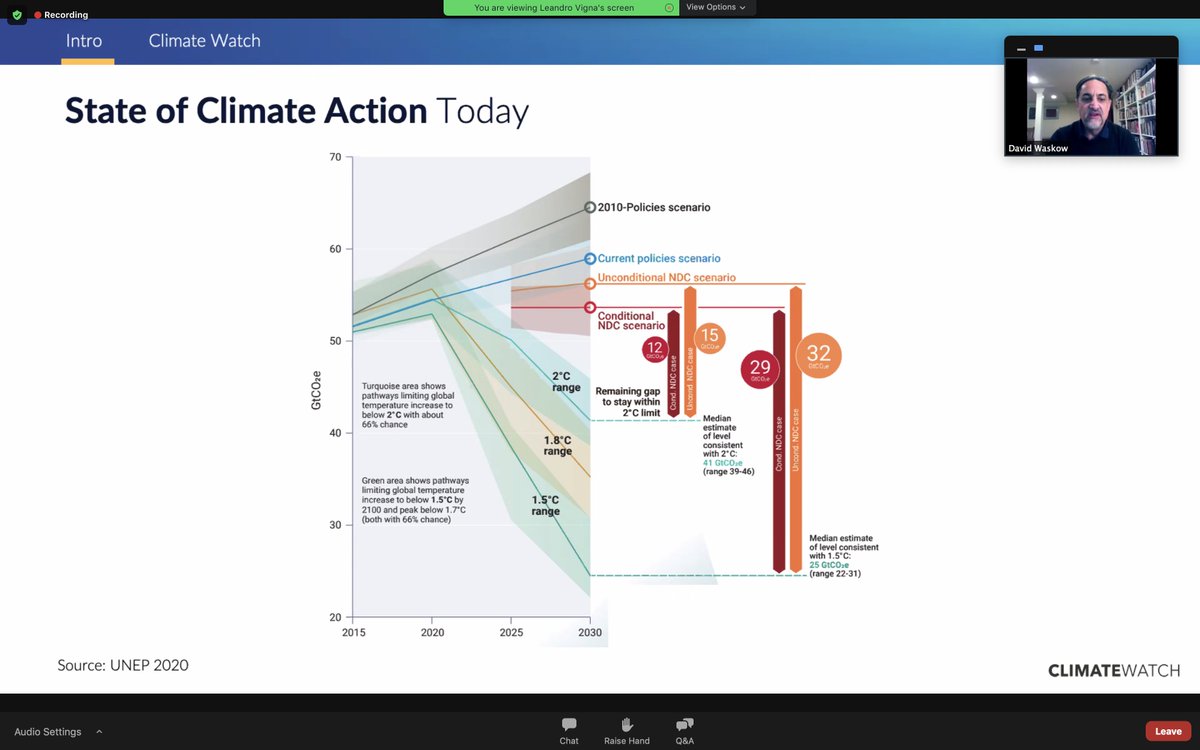
Of 21 indicators assessed for #ParisAgreement:
2 are on track (e.g., crop yields)
13 right direction but too slow (e.g., need electric vehicle sales to be 22x faster than now)
2 in wrong direction: forests, ag emissions
@davidwaskow from @climateactiontr, @WRIClimate et al 3/n
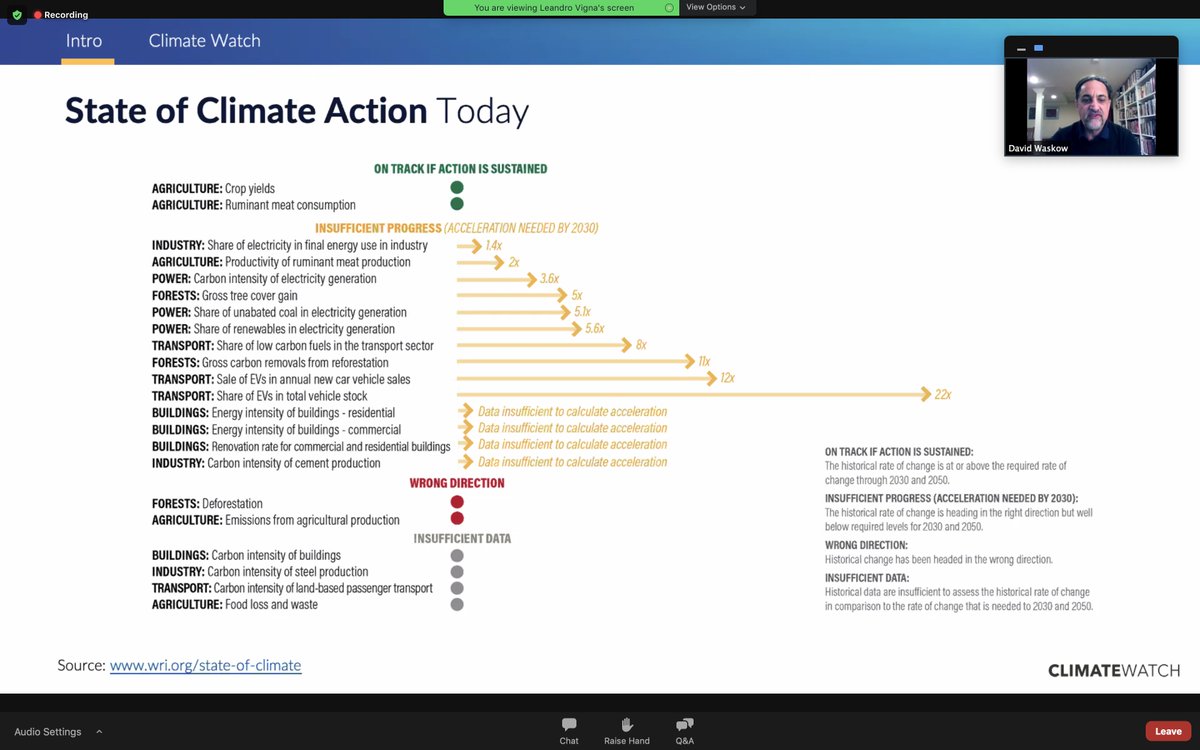
Current state of play: 12 Dec 2021= 5 year #ParisAgreement anniversary. Look for more announcements of national climate pledges. Some new pledges already released, but many govt's focused on #COVID19 recovery- important to link with climate-compatible recovery. @davidwaskow 4/n
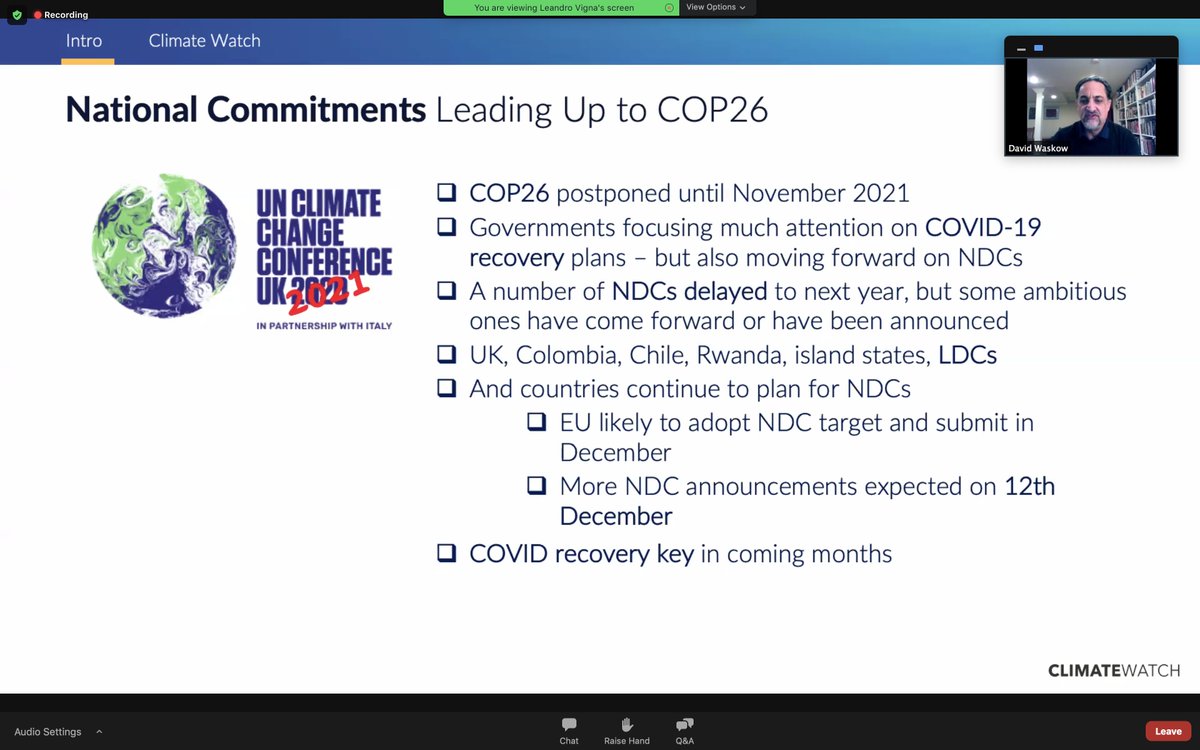
What is https://t.co/kymb46d9yv?
100s of credible datasets,
100,000s of data points
to assess #climate trends, targets, bring transparency to inform + drive #ClimateAction.
For govts, biz, researchers, NGOs
Run by @JohannesFried.
(See also other forest, energy, ... tools) 5/n

A 𝘁𝗵𝗿𝗲𝗮𝗱 on how mitigation works, why we probably need some level of carbon capture & storage (CCS) & carbon dioxide removal (CDR) - just not as much as in scenarios.
Based on my presentation ↦ https://t.co/j5uLxUi0xF
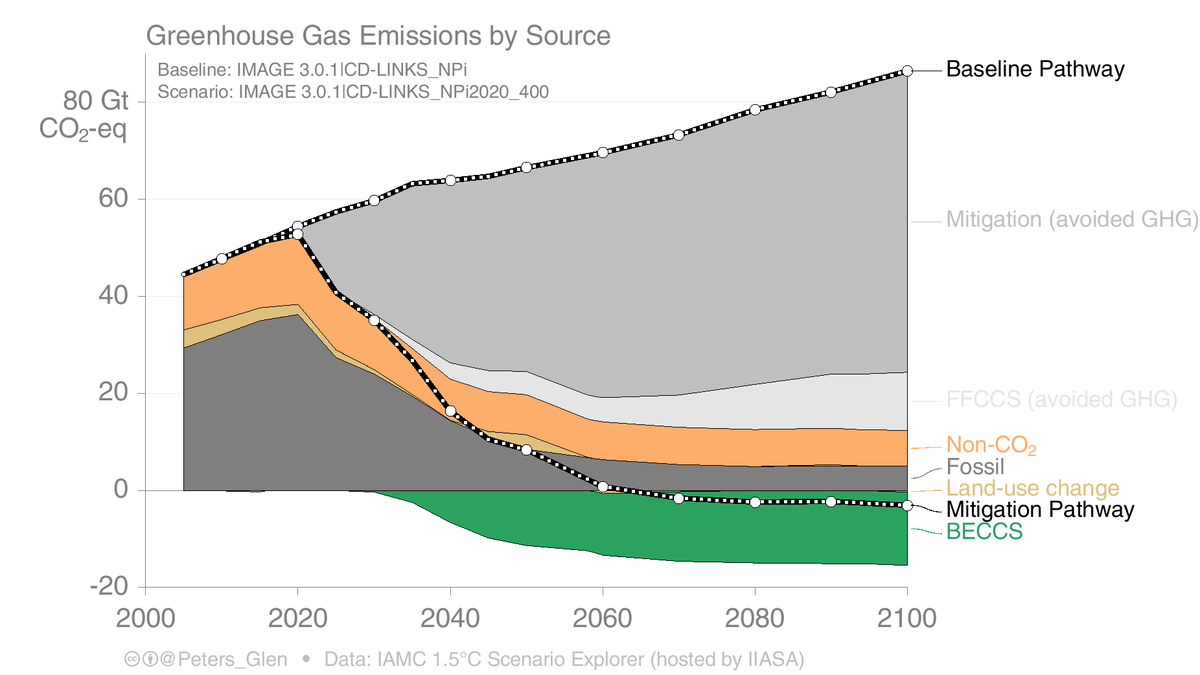
2. We start with a baseline or reference scenario, that assumes no or limited mitigation. If we want to stay "well below 2°C" we need to get rid of the dark grey & be net-zero!
We can argue about the baseline, but for the purposes here, it doesn't matter https://t.co/C0dAdj65tl

3. The heavy lifting is done by conventional mitigation: behavioural change, energy efficiency, fuel switching (fossils to non-fossils), changed transport, dematerialisation, etc, etc...
But, scenarios suggest this is not enough to get rid of all greenhouse gases.
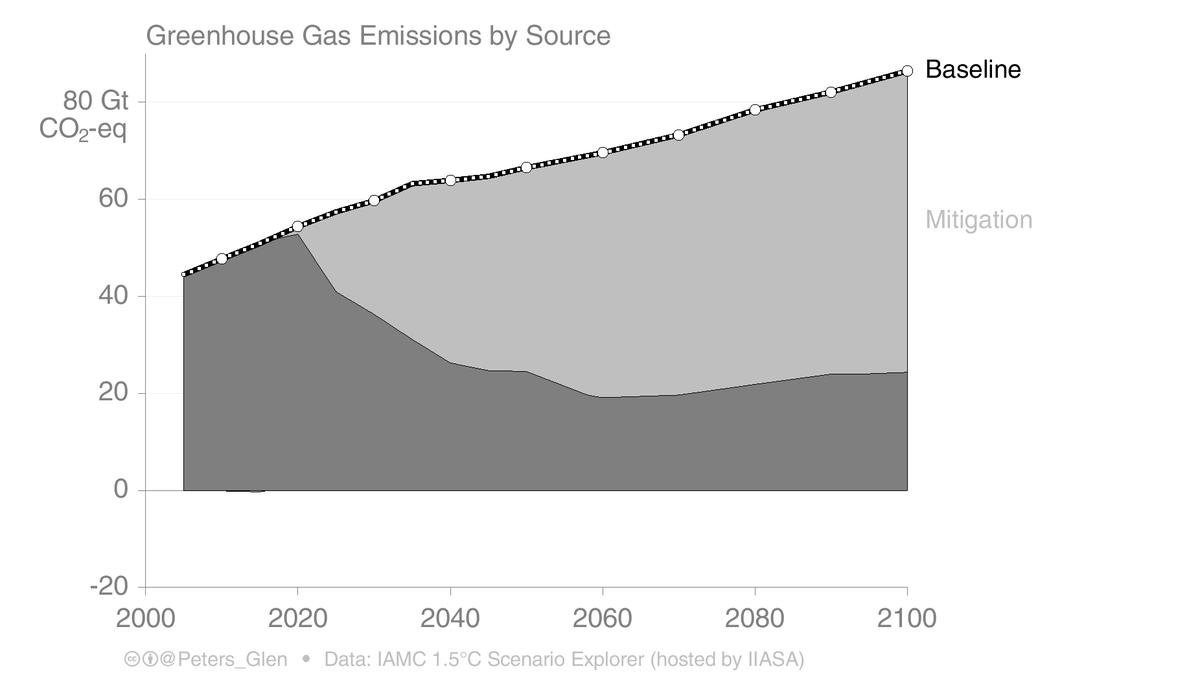
4. In some sectors, particularly some industrial sectors, perhaps the cheapest or only way to mitigate is with carbon capture & storage (CCS), eg, cement, steel, chemicals, etc
This is one reason we need CCS...
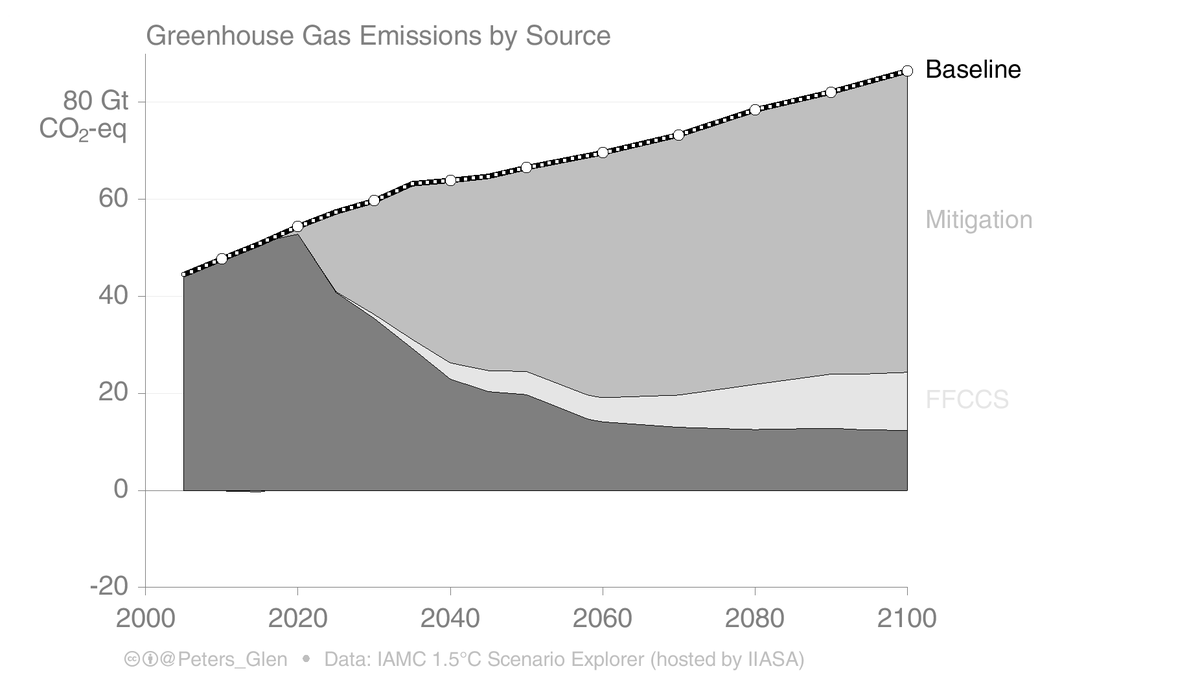
5. We can't forget about non-CO₂ emissions. We can probably get most non-CO₂ out of industry, but what about agriculture? Even if we change diet, reduce food waste, etc, we may not be able to eliminate CH₄ or N₂O from agriculture.
Some CO₂ & non-CO₂ remains (dark grey)...
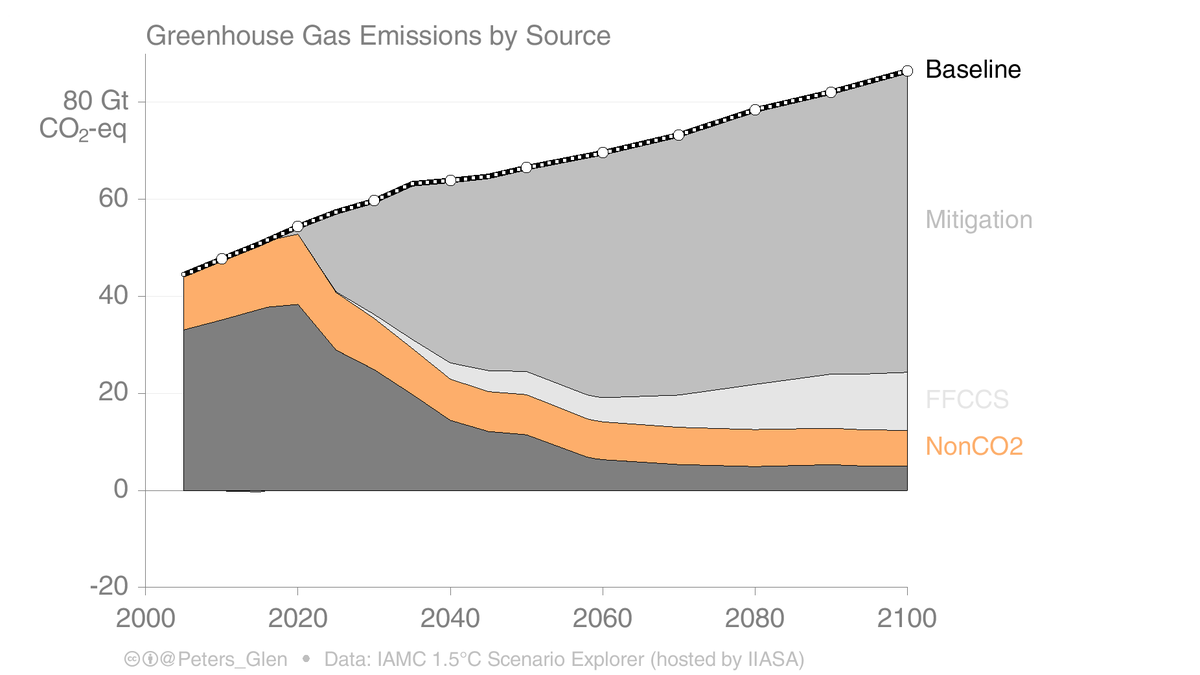
There is both good news and bad news buried in the report.
Most often, too much attention is paid to the headline month on month numbers.
1)

2) In year over year terms, total nonfarm payrolls did not increase for the first time since the pandemic. Generally, this is a negative.

3) Under the hood, most of the decline was in the government sector so it makes more sense to look at private payrolls in this context.

4) Private payroll growth continues to increase but the gains are clearly slowing down - this is to be expected.
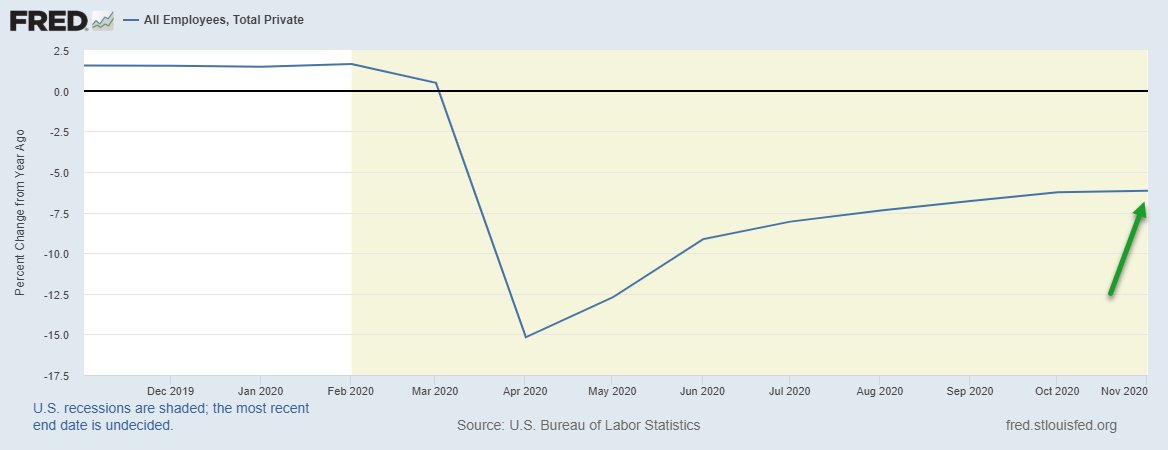
5) The troubling part of the report was the labor force participation rate which remains stubbornly low.
As @R_Perli highlighted, if the LFPR does not increase back to pre-COVID levels, we're going to struggle with weaker trend potential growth.
https://t.co/zw7fCZ2gfY
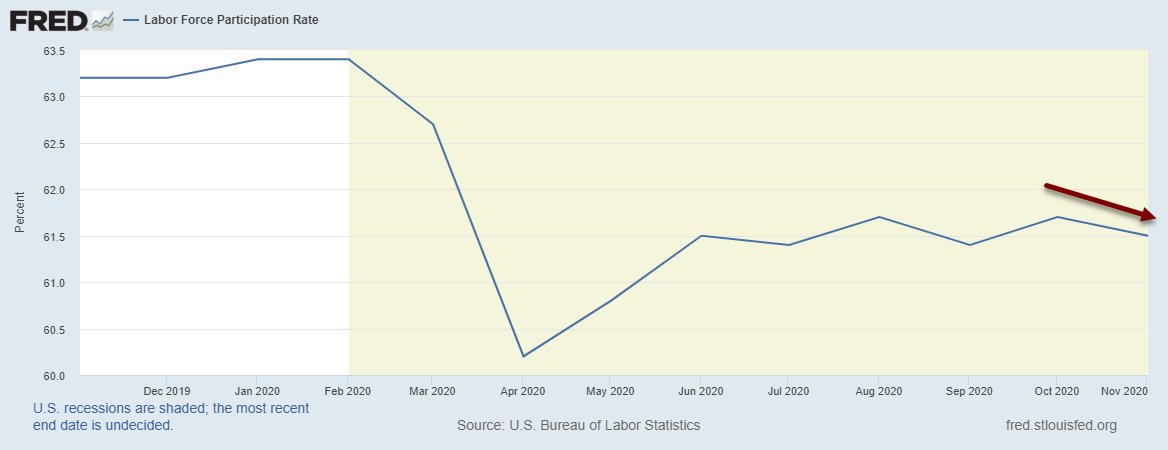
The worst part of the employment report is the stall in the labor force participation rate (-0.2% today and about 2% lower than pre-#COVID19).
— Roberto Perli (@R_Perli) December 4, 2020
The longer participation stays depressed, the harder it will be to bring those workers back, and the lower potential growth will be. pic.twitter.com/7u966oxBME
Easy as ABC. How to do it.
[THREAD]⚠️
#LockdownLevel3
#Bushiri
#RamaphosaChallenge
Go online to the website of CIPC and register a new company for R175, registration is R125 and the name is R50.
Go to https://t.co/RJcCHvdgCl which is the easiest website vision for CIPC.











